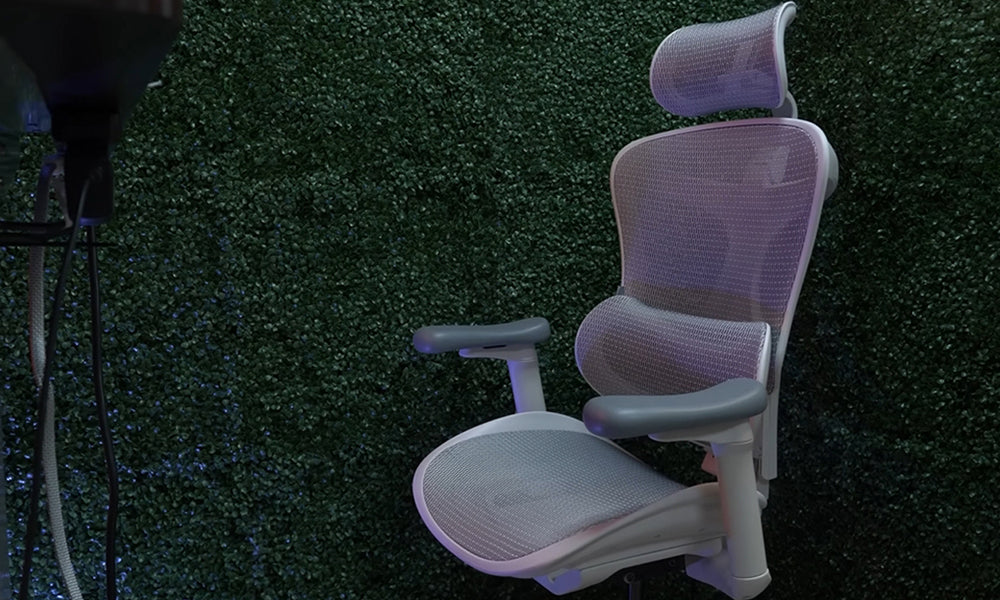One of the options that often comes up in discussions about ergonomic seating is the armless desk chair. While these chairs might seem like a minimalist choice, their ergonomic benefits and drawbacks are worth exploring. In this blog post, we’ll dive into the intricacies of armless desk chairs and determine if they can truly be considered ergonomic.
What is Ergonomics?
Before we delve into armless desk chairs specifically, it’s important to understand what ergonomics entails. Ergonomics is the science of designing workspaces and equipment to fit the user’s needs, thereby optimizing comfort and efficiency while minimizing the risk of injury. An ergonomic chair should ideally support proper posture, reduce strain on the body, and accommodate a range of movements and adjustments.
The Armless Desk Chair: An Overview
Armless desk chairs are exactly what their name suggests—chairs designed for desk work that do not have armrests. They come in various styles, from minimalist and modern designs to more traditional models, and are often chosen for their sleek appearance and space-saving qualities.
Ergonomic Benefits of Armless Desk Chairs
- Increased Mobility: One of the primary advantages of armless desk chairs is the enhanced mobility they offer. Without armrests, users can easily move their chair closer to their desk or push it further away. This flexibility is especially useful for tasks that require close proximity to the desk or frequent adjustments in seating position.
- Better Space Utilization: Armless chairs are often more compact than their armed counterparts, making them a good choice for small workspaces. They can fit under desks more easily, allowing users to utilize their workspace more efficiently.
- Freedom of Movement: For individuals who frequently shift their posture or need to move their arms freely while working, an armless chair can provide the necessary freedom. This is particularly beneficial for tasks like drawing, writing, or using a computer, where unrestricted arm movement is important.
- Reduced Risk of Shoulder Strain: Some users may find that armrests, if not properly adjusted, can lead to shoulder and neck strain. An armless chair eliminates this potential issue, allowing users to position themselves in a way that reduces strain on these areas.
Potential Drawbacks of Armless Desk Chairs
- Lack of Arm Support: The most obvious drawback of armless desk chairs is the absence of armrests. For individuals who require arm support while typing or working, this can lead to discomfort or strain on the shoulders, wrists, and upper back. Proper ergonomic arm support can help maintain a neutral wrist position and reduce fatigue during prolonged periods of use.
- Limited Adjustment Options: Many armless chairs come with fewer adjustment options compared to their armed counterparts. Features such as adjustable armrests, lumbar support, and seat depth are often crucial for achieving a personalized ergonomic setup. Without armrests, users might find it challenging to find a comfortable and supportive position.
- Potential for Poor Posture: Without the support of armrests, some users may find themselves slouching or leaning forward in an attempt to reach their desk. This can lead to poor posture and back discomfort over time. A well-designed ergonomic chair, including one with armrests, can help maintain proper posture and alignment.
- Limited Support for Certain Tasks: Certain tasks that involve prolonged use of the arms, such as detailed computer work or drafting, may benefit from armrests. Armless chairs might not provide the support needed for these activities, potentially leading to discomfort or strain.
How to Make Armless Desk Chairs More Ergonomic
If you prefer or are already using an armless desk chair, there are ways to enhance its ergonomic benefits:
- Adjust Your Desk Height: Ensure that your desk is at an appropriate height so that your elbows remain at a 90-degree angle when typing or working. This adjustment can help mitigate the lack of arm support and reduce strain.
- Use an External Arm Support: Consider using external arm support accessories, such as desk-mounted armrests or pads, to provide additional comfort and support while working. These can help compensate for the absence of built-in armrests.
- Focus on Chair Adjustments: Pay attention to other adjustable features of the chair, such as seat height, backrest angle, and lumbar support. Properly adjusting these elements can help improve overall comfort and support.
- Practice Good Posture: Be mindful of your posture while sitting. Sit back in the chair with your back straight and feet flat on the floor. Regularly changing your sitting position and taking breaks can also help reduce strain.
Conclusion
Armless desk chairs can offer several benefits, including increased mobility, better space utilization, and freedom of movement. However, they also have notable drawbacks, such as the lack of arm support and potential for poor posture. Whether an armless chair is ergonomic for you largely depends on your individual needs and work habits.
For those who require more comprehensive support, a chair with adjustable armrests and other ergonomic features might be a better choice. However, if you value mobility and a minimalist design, and can manage the potential drawbacks through proper adjustments and accessories, an armless desk chair could still serve you well.
Ultimately, the key to ergonomic seating is finding a chair that supports your unique body mechanics and work requirements. Whether armless or not, ensuring that your chair promotes good posture and comfort is essential for a healthy and productive work environment.



